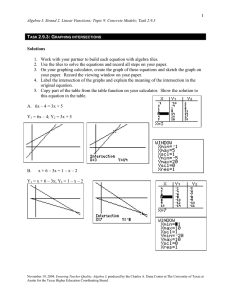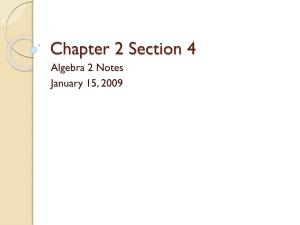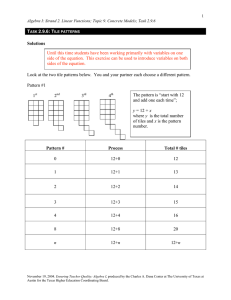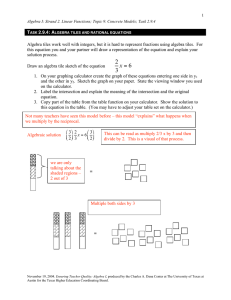Document 11665299
advertisement
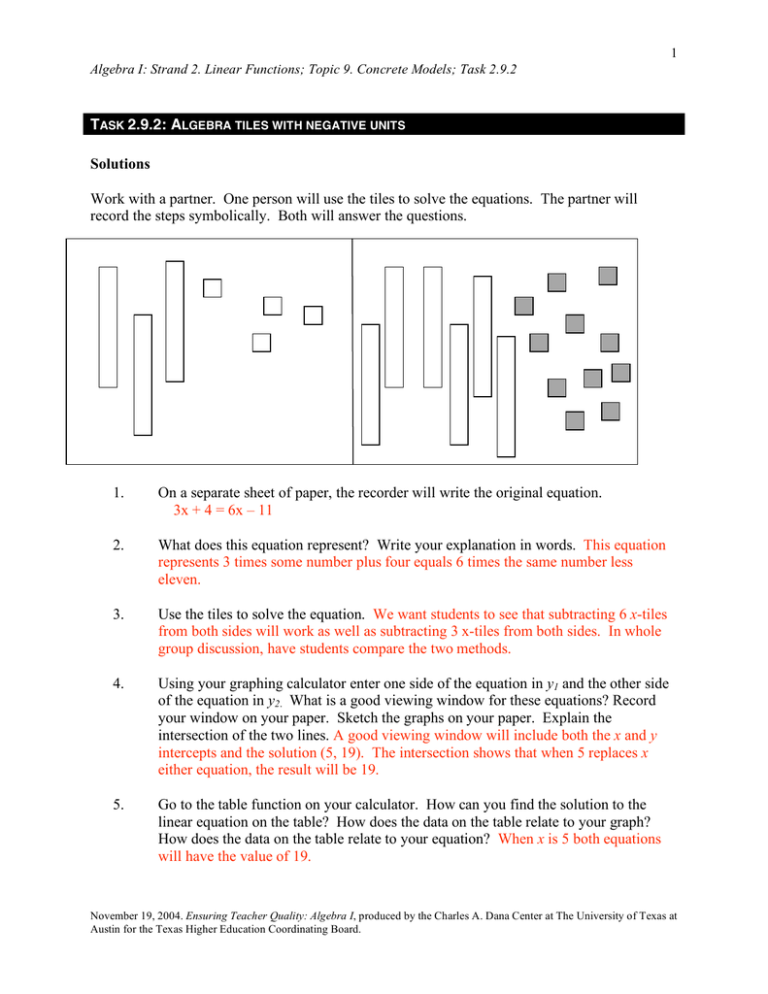
1 Algebra I: Strand 2. Linear Functions; Topic 9. Concrete Models; Task 2.9.2 TASK 2.9.2: ALGEBRA TILES WITH NEGATIVE UNITS Solutions Work with a partner. One person will use the tiles to solve the equations. The partner will record the steps symbolically. Both will answer the questions. 1. On a separate sheet of paper, the recorder will write the original equation. 3x + 4 = 6x – 11 2. What does this equation represent? Write your explanation in words. This equation represents 3 times some number plus four equals 6 times the same number less eleven. 3. Use the tiles to solve the equation. We want students to see that subtracting 6 x-tiles from both sides will work as well as subtracting 3 x-tiles from both sides. In whole group discussion, have students compare the two methods. 4. Using your graphing calculator enter one side of the equation in y1 and the other side of the equation in y2. What is a good viewing window for these equations? Record your window on your paper. Sketch the graphs on your paper. Explain the intersection of the two lines. A good viewing window will include both the x and y intercepts and the solution (5, 19). The intersection shows that when 5 replaces x either equation, the result will be 19. 5. Go to the table function on your calculator. How can you find the solution to the linear equation on the table? How does the data on the table relate to your graph? How does the data on the table relate to your equation? When x is 5 both equations will have the value of 19. November 19, 2004. Ensuring Teacher Quality: Algebra I, produced by the Charles A. Dana Center at The University of Texas at Austin for the Texas Higher Education Coordinating Board. 2 Algebra I: Strand 2. Linear Functions; Topic 9. Concrete Models; Task 2.9.2 TASK 2.9.2: ALGEBRA TILES WITH NEGATIVE UNITS Work with a partner. One person will use the tiles to solve the equations. The partner will record the steps symbolically. Both students will answer the questions. 1. On a separate sheet of paper, the recorder will write the original equation. 2. What does this equation represent? Write your explanation in words. 3. Use the tiles to solve the equation 4. Using your graphing calculator enter one side of the equation in y1 and the other side of the equation in y2. What is a good viewing window for these equations? Record your window on your paper. Sketch the graphs on your paper. Explain the intersection of the two lines. 5. Go to the table function on your calculator. How can you find the solution to the linear equation on the table? How does the data on the table relate to your graph? How does the data on the table relate to your equation? November 19, 2004. Ensuring Teacher Quality: Algebra I, produced by the Charles A. Dana Center at The University of Texas at Austin for the Texas Higher Education Coordinating Board.
